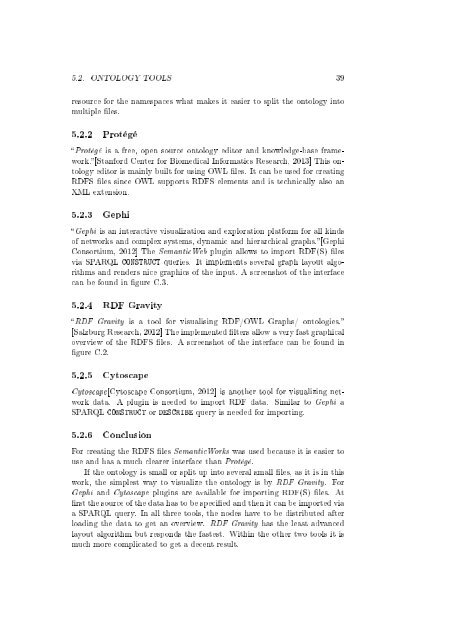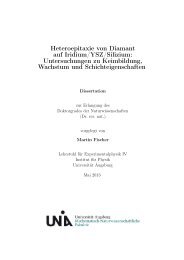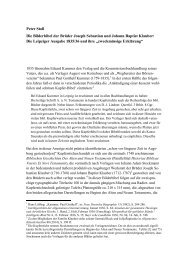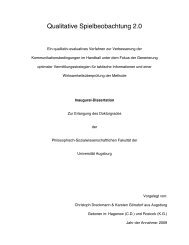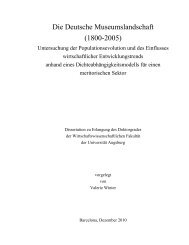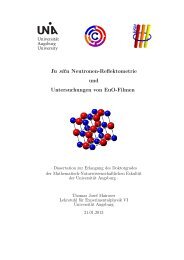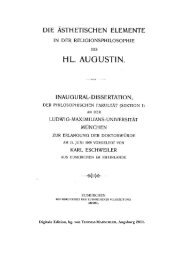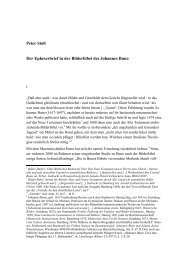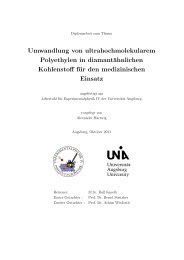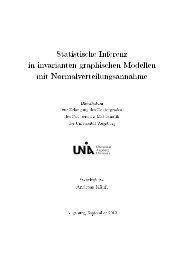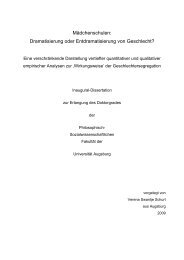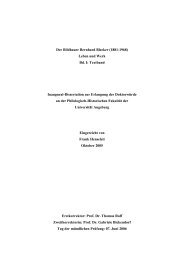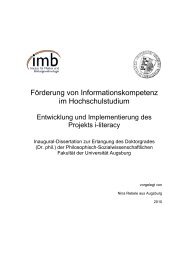An Ontology for Digital Forensics in IT Security Incidents - OPUS
An Ontology for Digital Forensics in IT Security Incidents - OPUS
An Ontology for Digital Forensics in IT Security Incidents - OPUS
Create successful ePaper yourself
Turn your PDF publications into a flip-book with our unique Google optimized e-Paper software.
5.2. ONTOLOGY TOOLS 39<br />
resource <strong>for</strong> the namespaces what makes it easier to split the ontology <strong>in</strong>to<br />
multiple les.<br />
5.2.2 Protégé<br />
Protégé is a free, open source ontology editor and knowledge-base framework.[Stan<strong>for</strong>d<br />
Center <strong>for</strong> Biomedical In<strong>for</strong>matics Research, 2013] This ontology<br />
editor is ma<strong>in</strong>ly built <strong>for</strong> us<strong>in</strong>g OWL les. It can be used <strong>for</strong> creat<strong>in</strong>g<br />
RDFS les s<strong>in</strong>ce OWL supports RDFS elements and is technically also an<br />
XML extension.<br />
5.2.3 Gephi<br />
Gephi is an <strong>in</strong>teractive visualization and exploration plat<strong>for</strong>m <strong>for</strong> all k<strong>in</strong>ds<br />
of networks and complex systems, dynamic and hierarchical graphs.[Gephi<br />
Consortium, 2012] The SemanticWeb plug<strong>in</strong> allows to import RDF(S) les<br />
via SPARQL CONSTRUCT queries. It implements several graph layout algorithms<br />
and renders nice graphics of the <strong>in</strong>put. A screenshot of the <strong>in</strong>terface<br />
can be found <strong>in</strong> gure C.3.<br />
5.2.4 RDF Gravity<br />
RDF Gravity is a tool <strong>for</strong> visualis<strong>in</strong>g RDF/OWL Graphs/ ontologies.<br />
[Salzburg Research, 2012] The implemented lters allow a very fast graphical<br />
overview of the RDFS les. A screenshot of the <strong>in</strong>terface can be found <strong>in</strong><br />
gure C.2.<br />
5.2.5 Cytoscape<br />
Cytoscape[Cytoscape Consortium, 2012] is another tool <strong>for</strong> visualiz<strong>in</strong>g network<br />
data. A plug<strong>in</strong> is needed to import RDF data. Similar to Gephi a<br />
SPARQL CONSTRUCT or DESCRIBE query is needed <strong>for</strong> import<strong>in</strong>g.<br />
5.2.6 Conclusion<br />
For creat<strong>in</strong>g the RDFS les SemanticWorks was used because it is easier to<br />
use and has a much clearer <strong>in</strong>terface than Protégé.<br />
If the ontology is small or split up <strong>in</strong>to several small les, as it is <strong>in</strong> this<br />
work, the simplest way to visualize the ontology is by RDF Gravity. For<br />
Gephi and Cytoscape plug<strong>in</strong>s are available <strong>for</strong> import<strong>in</strong>g RDF(S) les. At<br />
rst the source of the data has to be specied and then it can be imported via<br />
a SPARQL query. In all three tools, the nodes have to be distributed after<br />
load<strong>in</strong>g the data to get an overview. RDF Gravity has the least advanced<br />
layout algorithm but responds the fastest. With<strong>in</strong> the other two tools it is<br />
much more complicated to get a decent result.


